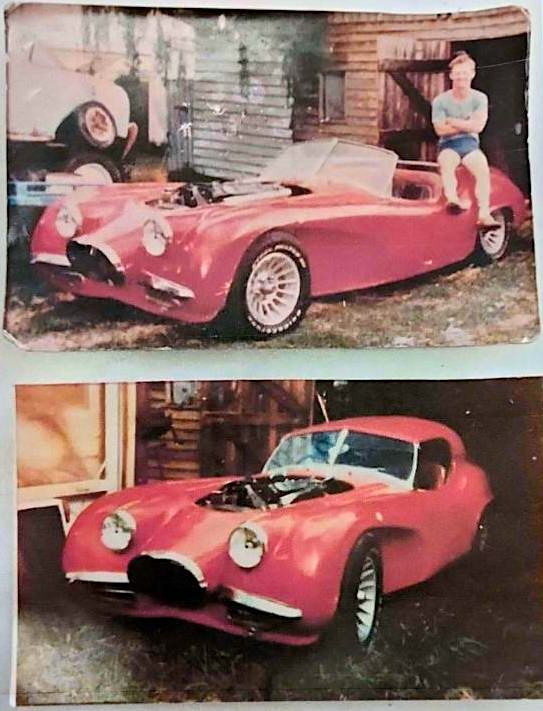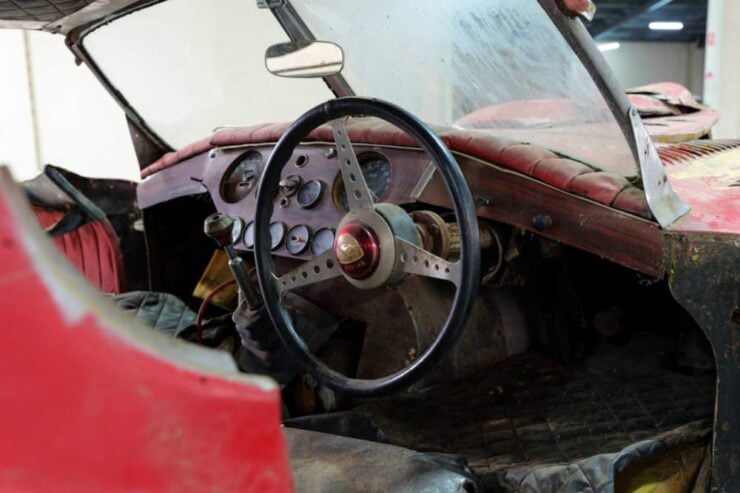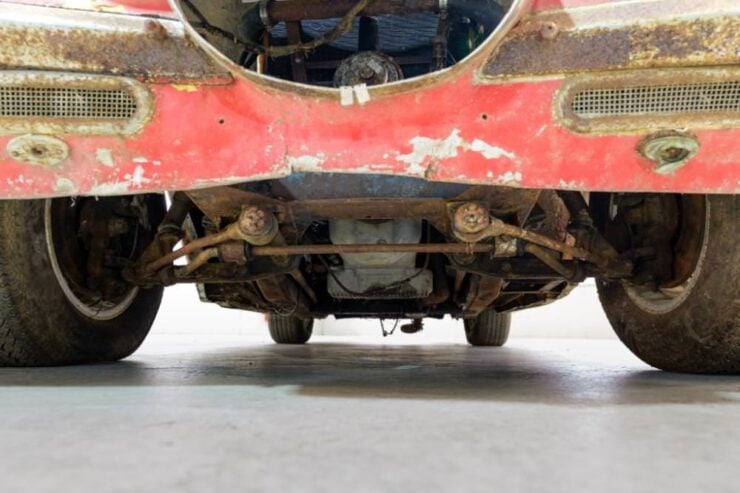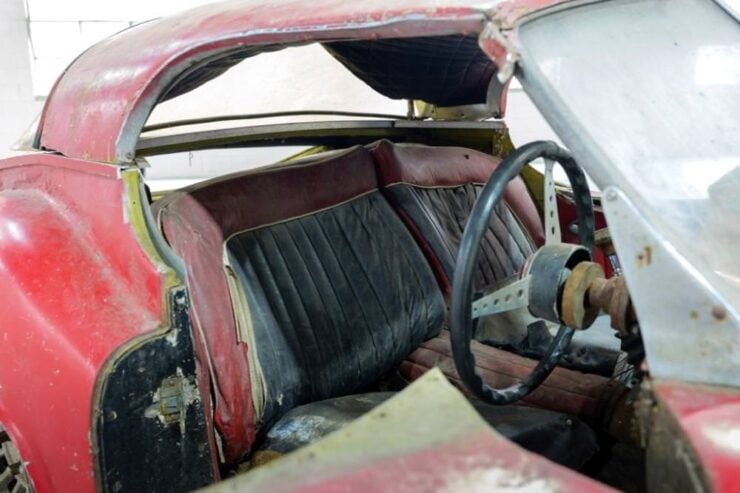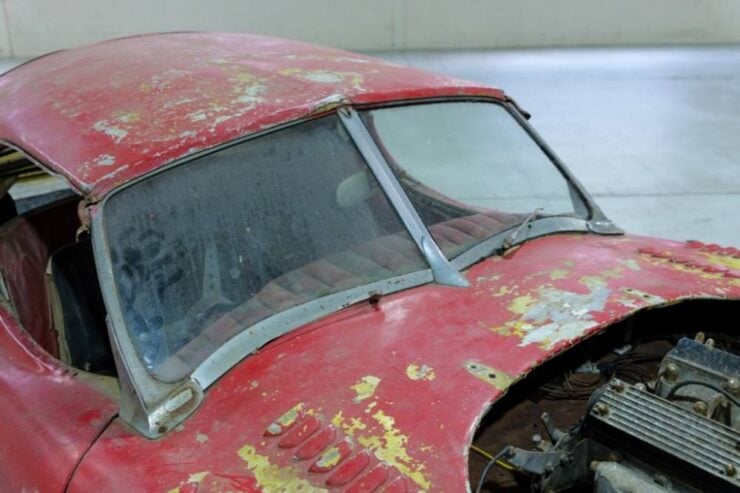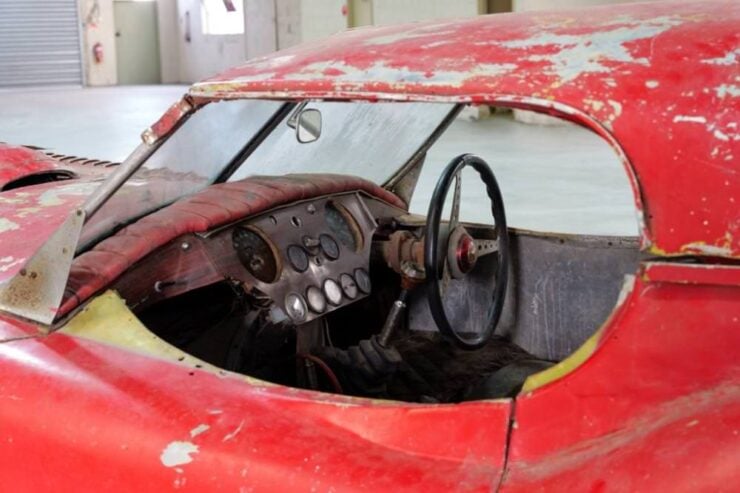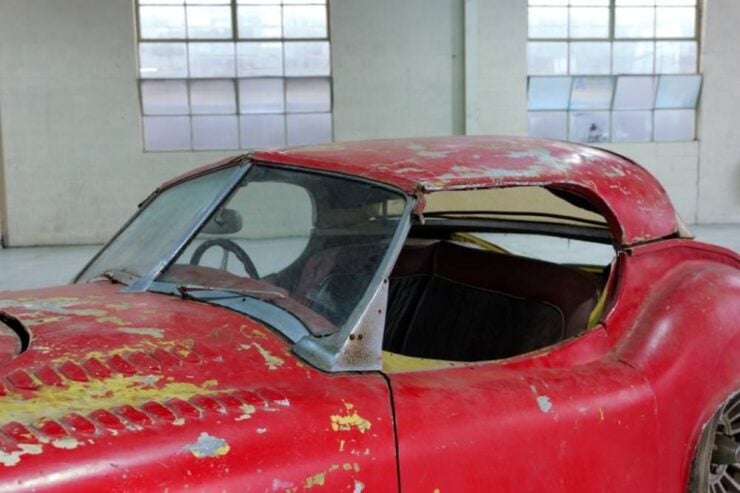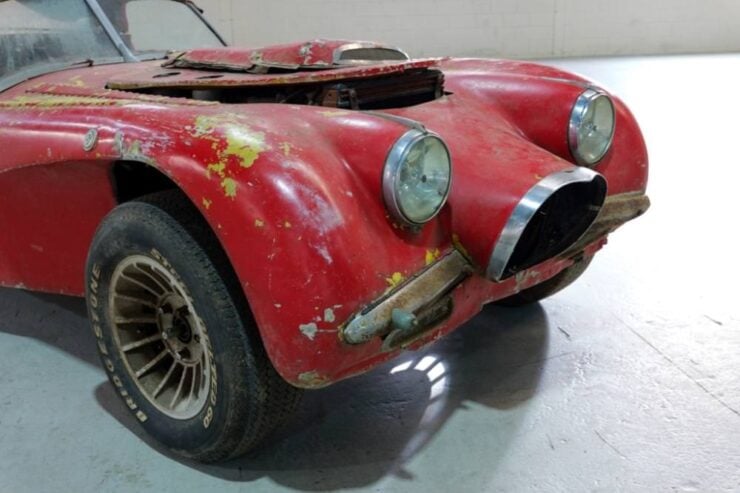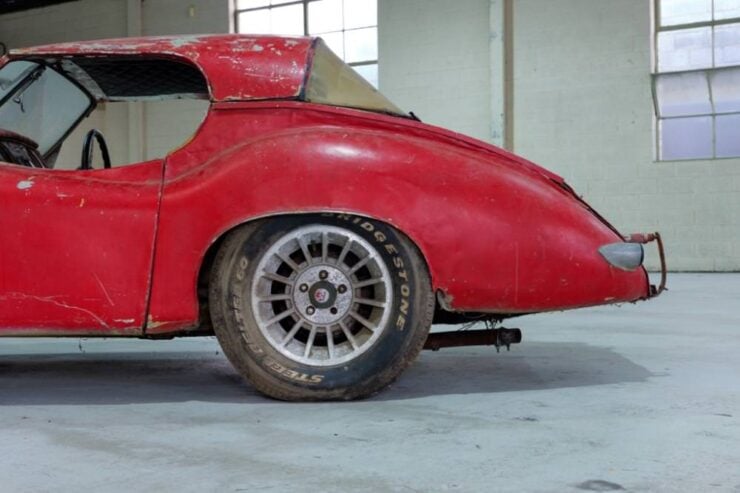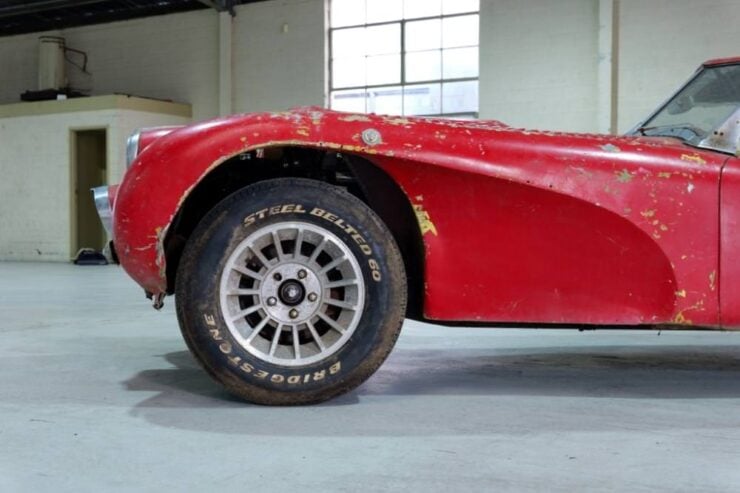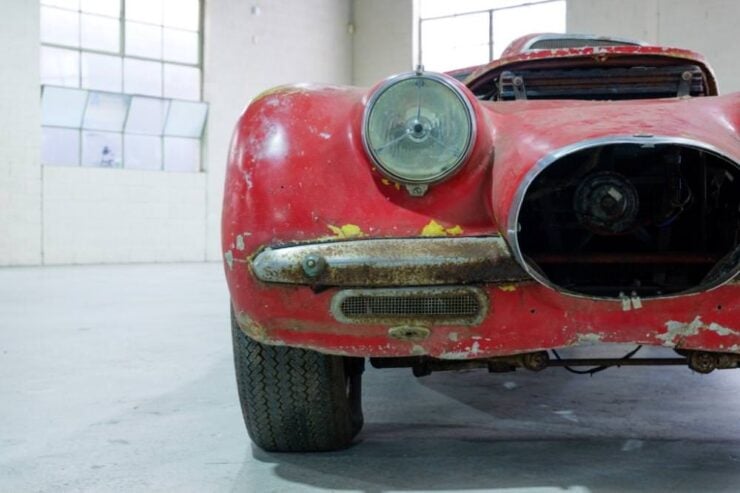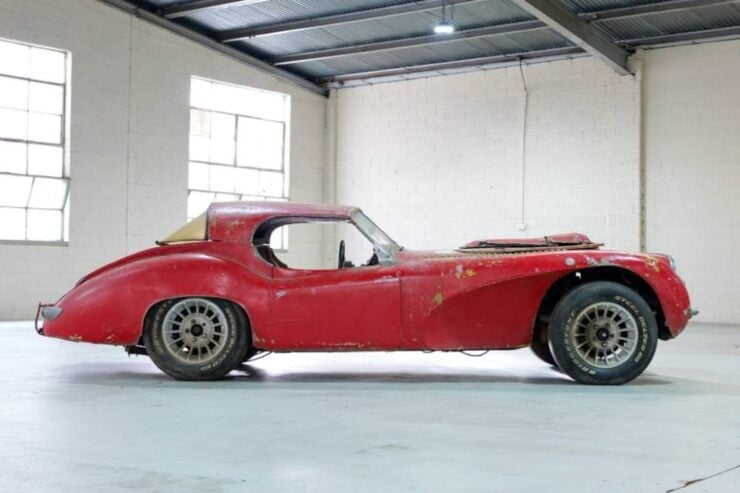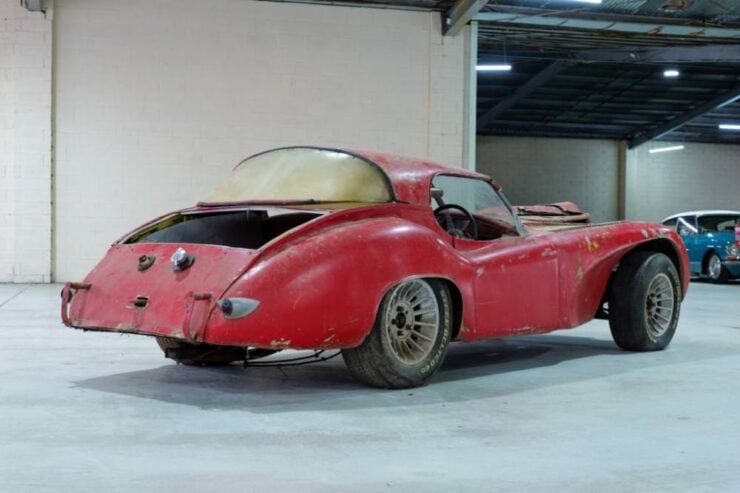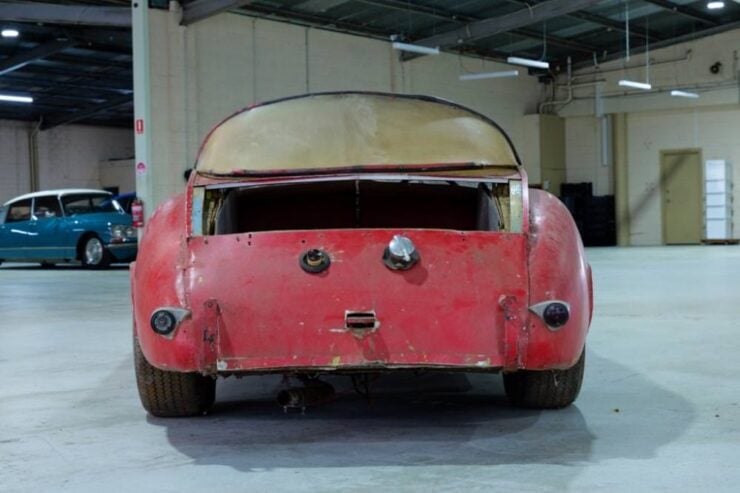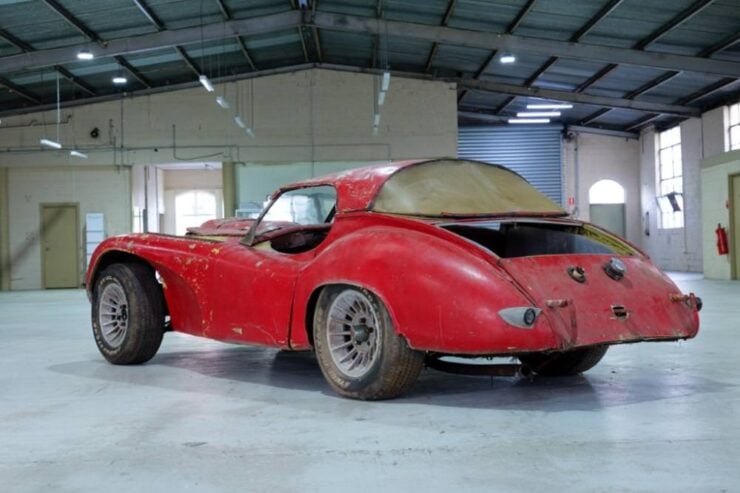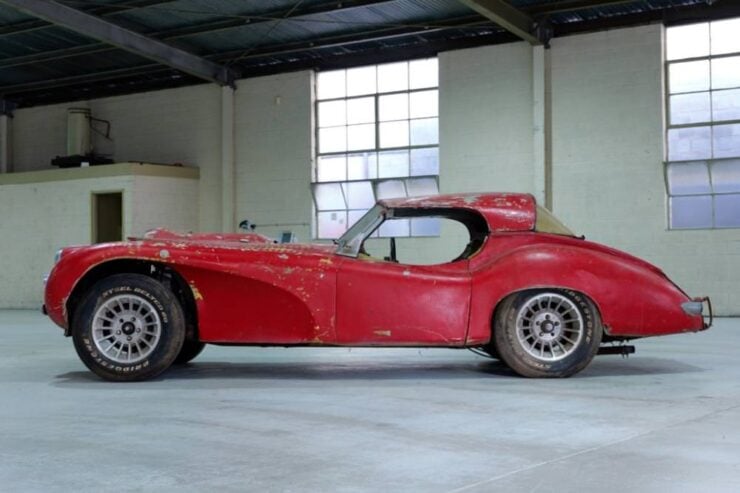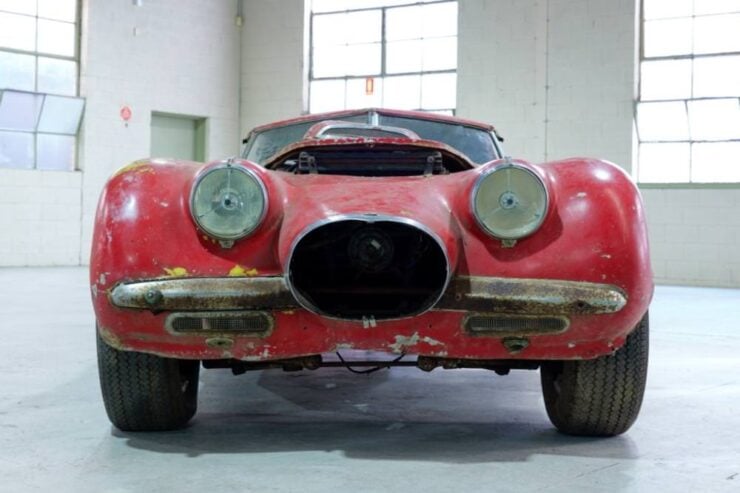This is a 1950 Jaguar XK120 Roadster, an early example with the rare alloy body and one of just 57 right-hand drive cars that were so equipped from the factory. As you can tell by its unusual looks, it’s had quite the life.
It was shipped to Australia when new, and has seen a succession of modifications applied over the intervening decades. The most significant changes were made in 1958, including those 250 Testa Rossa-style scalloped sections behind the front wheels.
Fast Facts: The 1950 Jaguar XK120 “Australian Special”
- This 1950 Jaguar XK120 is a rare alloy-bodied roadster, one of only 57 right-hand drive examples made. It was shipped new to Australia and later underwent significant customization in 1958, most notably the addition of scalloped fender cutouts and a fiberglass fastback roof.
- The Jaguar XK120 debuted in 1948 as a showcase for the new 3.4 liter XK engine, with 160 bhp and a top speed of 120 mph. The earliest cars were hand-built with aluminum bodies over ash frames, and only 242 of these alloy-bodied cars were produced before Jaguar switched to mass-production steel bodies in 1950.
- Originally a performance icon, the XK120 won early races and rallies and helped revive Britain’s motorsport reputation post-WWII. It attracted celebrity owners like Clark Gable and Phil Hill, and laid the groundwork for future Le Mans-winning Jaguars. Over 12,000 examples were built between 1948 and 1954 before being replaced by the XK140.
- The “Australian Special” has passed through several owners and saw mechanical upgrades, including a more powerful Jaguar XJ6 engine, an overdrive manual gearbox, and Mk IX/Mk II brake and axle conversions. After years neglected in a field, it is now being auctioned by Donington Auctions, with restoration or preservation decisions left to its next custodian.
History Speedrun: The Jaguar XK120
The Jaguar XK120 was introduced in 1948 as a showcase of sorts for Jaguar’s then-new 3.4 liter XK straight-six, a relatively advanced engine for the time. Developed under the direction of Sir William Lyons and engineered by William Heynes, the XK120 was initially conceived as a limited-production model to generate excitement around the engine’s debut.
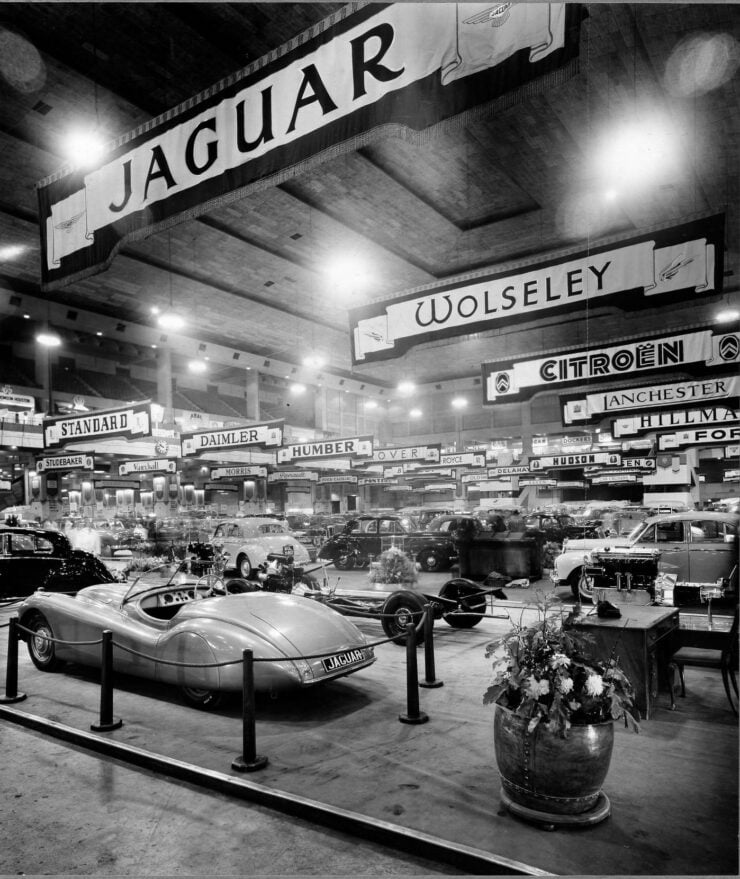

It stunned audiences at the 1948 London Motor Show with its flowing lines, beautifully curved open body, and its promise of 120 mph performance – hence the name – “XK” for the engine, and “120” for the top speed.
It’s worth noting that 1948 was just 3 years after the end of WWII, the major automakers of the world had all turned their production capacity over to the war effort for the duration of the conflict, and as a result there had been no new major model releases in Europe since 1939/1940 when the war began.
It was into this world starved of new cars that the Jaguar XK120 landed, with its stunning good looks and 120 mph top speed it was both the fastest production car in the world, and undeniably one of the most beautiful.
The earliest production examples of the XK120 were built with hand-formed aluminum alloy body panels over ash wood frames mounted to a modified steel chassis sourced from the Jaguar Mark V.
Only 242 alloy-bodied cars were produced between 1948 and early 1950 before Jaguar transitioned to mass-production using all-steel bodies which were much faster (and cheaper) to produce. These early alloy-bodied cars are now the most prized among collectors due to their rarity, low weight, and hand-built construction.
The XK120 was powered by the double overhead cam 3.4 liter XK engine producing 160 bhp in standard tune. Coupled with a 4-speed manual gearbox, the car could accelerate from 0 to 60 mph in around 10 seconds, exceptional for the time.
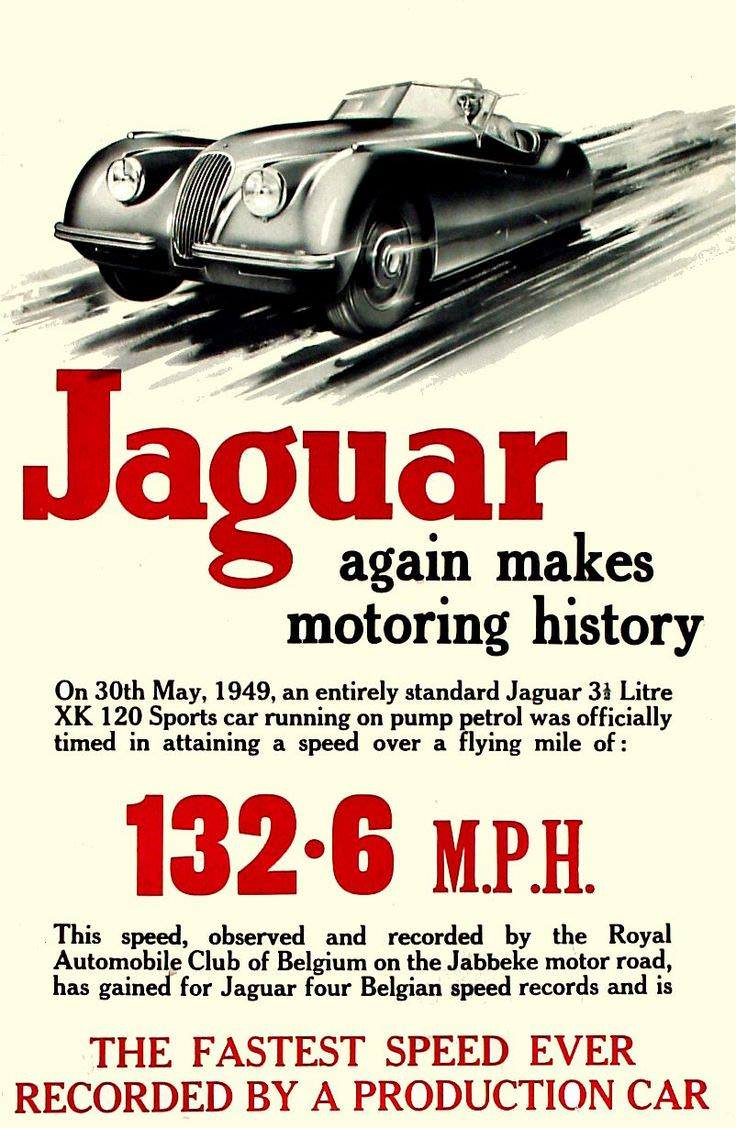


In 1949, a specially prepared XK120 achieved 132.6 mph on a Belgian motorway, demonstrating that the car could well exceed its namesake speed under the right conditions, and with a few tweaks.
Initially offered as an open two-seater (OTS), Jaguar expanded the line to include a fixed-head coupe (FHC) in 1951 and a drophead coupe (DHC) in 1953. Suspension was independent at the front with torsion bars, while the rear used a live axle on semi-elliptical leaf springs. Drum brakes all around were standard, though they were one of the car’s few performance limitations, especially under competition conditions.
The XK120 had immediate success in motorsport. It won at Silverstone in 1949, placed well in Alpine rallies, and formed the basis for the Jaguar C-Type, which won Le Mans in 1951 and 1953.
Privateers and factory-backed teams raced XK120s in events ranging from Mille Miglia to hill climbs and endurance rallies. Its performance and reliability helped re-establish Britain’s reputation in global motorsport after the war.
The car attracted a loyal following among celebrities and racers. Clark Gable famously owned one of the first XK120s sold in the United States. Other noted owners included Humphrey Bogart, Lauren Bacall, and Formula 1 driver Phil Hill, who raced the model in his early career. Its combination of speed, glamour, and design made it an immediate symbol of postwar sophistication.
Jaguar built 12,055 XK120s between 1948 and 1954. It was succeeded by the XK140 in 1954, which retained much of the styling but featured revised suspension, more interior space, and improved brakes.
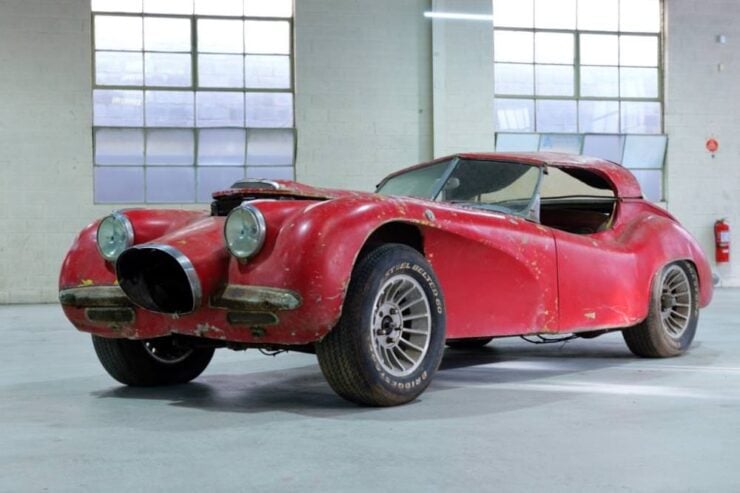


The 1950 Jaguar XK120 “Australian Special” Shown Here
The car you see here is most certainly going to fall into that category of cars that people either love or hate. It started life in the normal way, it was built by Jaguar as one of the very early alloy-bodied examples, then shipped to its first owner in Victoria, Australia in 1950.
That first owner, James R. Skinner, raced it twice at the Rob Roy Hillclimb in 1951. Things began to get interesting in 1958 when the car was bought by Vincent Boyle who modified the car extensively. It was at this time that those scalloped front fenders were added, it was also given a removable fiberglass fastback hardtop.
It’s possible that those scalloped fenders were directly inspired by the Ferrari 250 Testa Rossa sports racing car which had debuted a year earlier in 1957. The Testa Rossa also had a hood scoop for better airflow and a prominent nose/radiator opening – though these features were far better executed in Italy by Scaglietti than they were on this car.
The car would later pass through a few more hands, the color was changed a number of times, and some more modifications were made. The original engine was replaced with a more powerful Jaguar XJ6 engine and a manual overdrive gearbox, and it was given Jaguar Mk IX disc brakes up front and a complete Jaguar Mk II rear axle.
Eventually, the car came upon hard times and ended up sitting in a field for many years. It was saved a little more recently by a prominent Victorian enthusiast with the intention of restoring it. Sadly, life got in the way, and the car is now being offered for sale in the hopes that it will be restored and returned to the road (or race track).
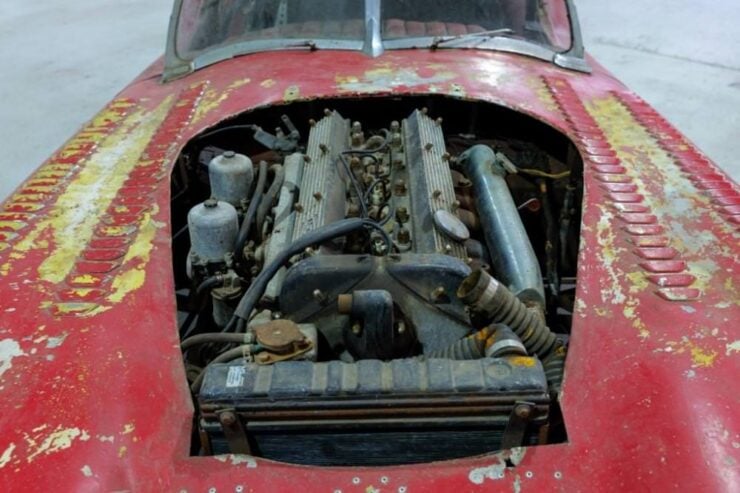


The buyer will have to decide if they want to restore it back to original 1950 alloy-body spec, or preserve some of its unique modifications. Sadly, the location of the numbers-matching engine isn’t known.
The car is now due to roll across the auction block with Donington Auctions in Australia in late-July, bidding is now open online and you can visit the listing here if you’d like to read more about it or register to bid yourself.
Images courtesy of Donington Auctions


